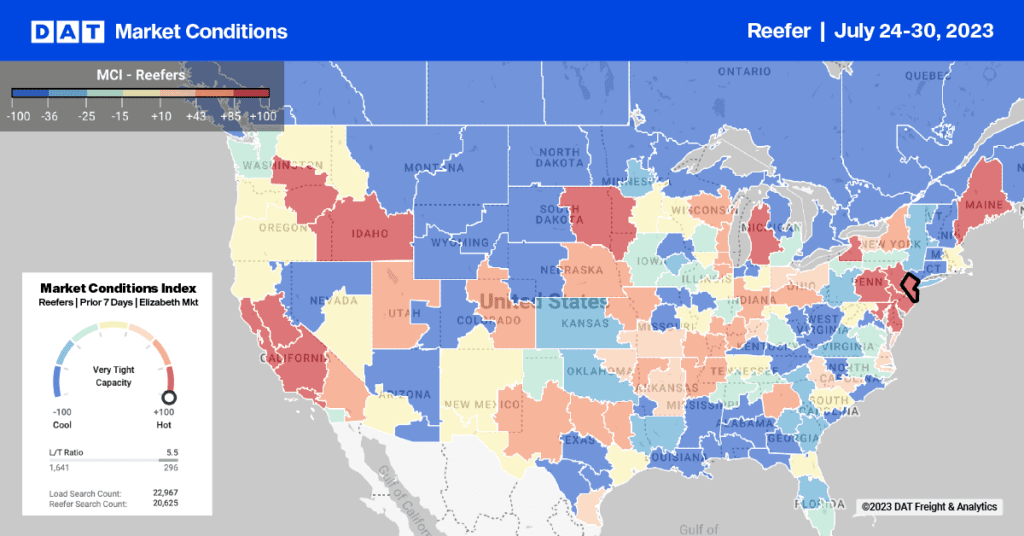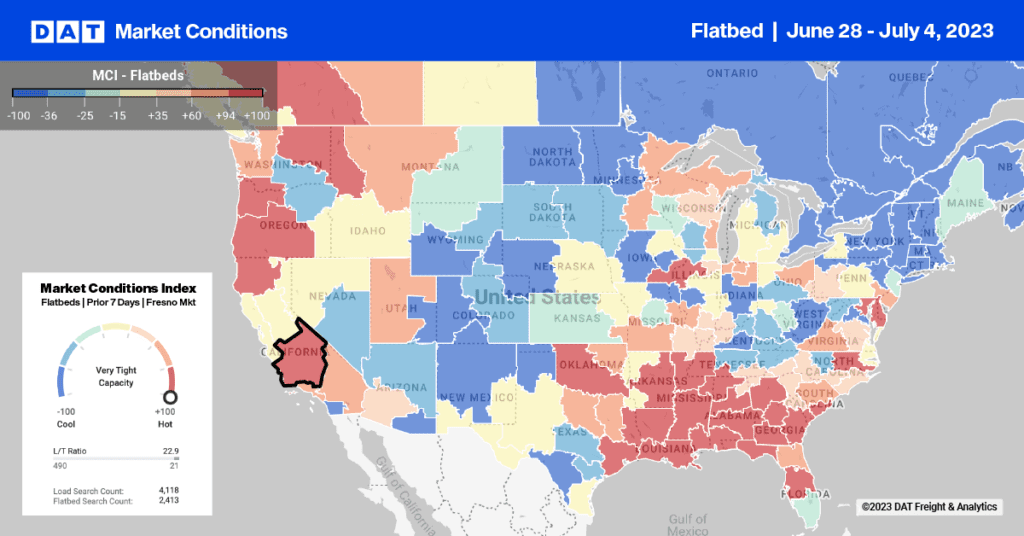Last month, I speculated that reefer rates might continue to rise in July, even beyond the typical June peak. Fruit and vegetable harvests were early and plentiful in Florida, Arizona, Texas and Southern California, the southernmost agricultural markets on each coast, but the season began and ended early. Spring harvests were complete by late May in Central and South Florida and in Southern California, and the produce season reached its peak in Central California well before the end of June. Compared to last year’s yield in those key regions, this year’s growing season began and ended two to three weeks early.
You would expect the harvest season to migrate north, as it does every year, with accompanying spikes in reefer and van traffic. But heat waves in agricultural areas throughout the U.S. have led to severe drought, destroying crops and leading the Department of Agriculture to designate more than 1,000 counties in 26 states as disaster areas that qualify for special Federal loan rates and other funds. Some observers speculate that the drought is the worst in 50 years, affecting over 54% of the 48 contiguous states.

Drought-ravaged corn in Owensboro, KY (Photo credit: AP – John Dunham, on Weather.com)
A “million-dollar rain” is expected this week in parts of the Midwest, but it may be too late to save some crops. Yields are likely to be low on certain commodities, which will put enormous pressure on prices for corn and grains as well as many processed foods. Drought conditions can also lead cattle farmers to slaughter underfed livestock ahead of schedule, so meat prices could drop in late summer and then rise in the winter when cattle become more scarce.
Reefer freight rates are likely to decline earlier than usual in areas affected by the drought. It is normal for reefer rates to drop when demand wanes, but in the case of such a widespread drought, freight volume is even lower than normal for the season. Because the harvest has barely begun in the drought-stricken Midwest, it is still too early to see the effect on spot market rates, but I expect to have more detailed results for you in the coming weeks.

Boats at a dock in West Lafayette, IN, where there should be a lake (Photo credit: AP, John Terhune, from Weather.com)
How We Measure
I monitor outbound reefer traffic and rates from agricultural markets every week from April through October. I keep an especially close eye on the top 64 lanes, most of them outbound from 17 agricultural centers that are among the markets highlighted by the USDA in its weekly fruit and vegetable truck rate report.
4 in California: Fresno, Sacramento, Ontario and Santa Ana
4 in the West, not including CA: Phoenix, Denver, Twin Falls ID and Salt Lake City
2 in Texas: Fort Worth and McAllen
2 in the Midwest: Grand Rapids MI and Green Bay
3 in the Southeast: Atlanta, Lakeland FL and Miami
2 in the Northeast: Philadelphia and Elizabeth NJ


